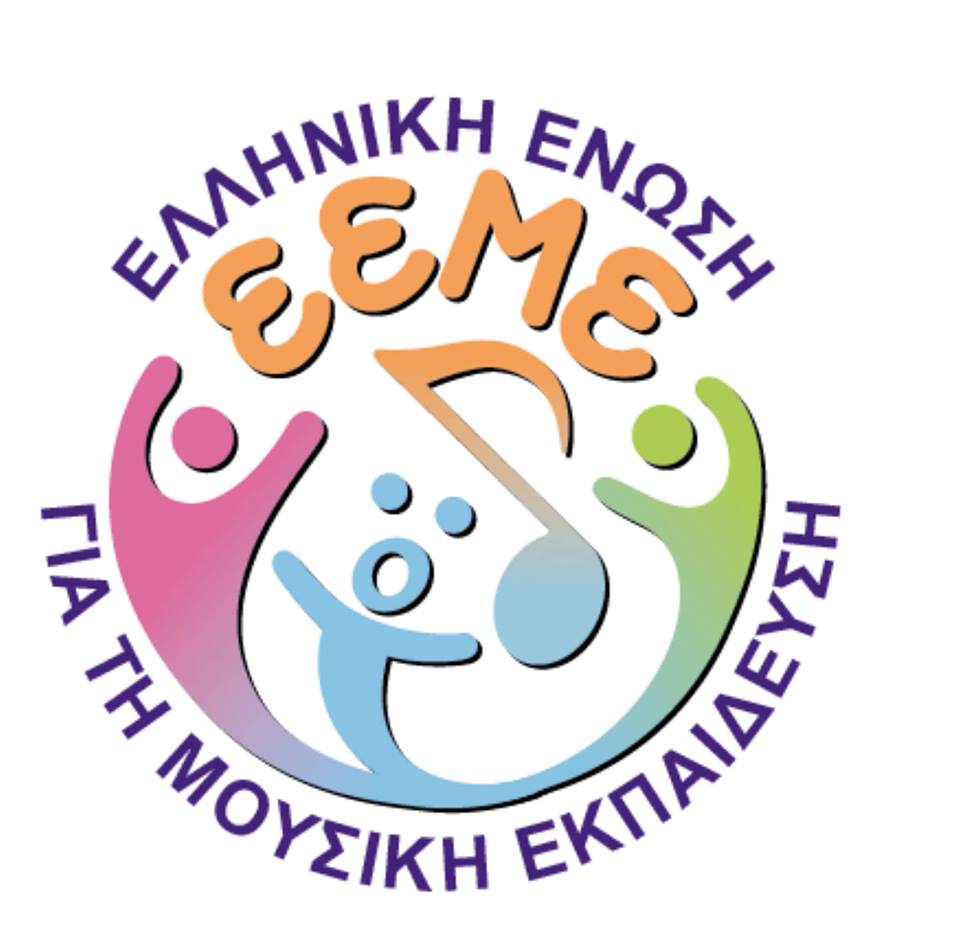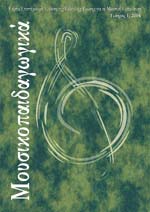Contents:
1) Stamou Lelouda: The effect of Suzuki instruction and early childhood music experiences on developmental music aptitude and performance achievement of beginning Suzuki string students
2) Papapanagiotou Xanthoula: Adolescence, Music and Education
3) Economidou-Stavrou Natassa: Music Curriculum in First-grade Education in Cyprus - From Intention to Reality
4) Bessas Dimitris, Kokkidou May: The Music Teacher through the Curricula (1969-2004)
5) Likesas Georgios, Konstantinidou Maria, Papadopoulou Sophia: Creative lesson of traditional dance teaching at the first classes of Elementary School
Abstracts:
1) Lelouda Stamou
The effect of Suzuki instruction and early childhood music experiences on developmental music aptitude and performance achievement
of beginning Suzuki string students
The study aimed at investigating a) the effect of Suzuki instruction on developmental music aptitude of beginning Suzuki string students, b) the extend to which students developmental music aptitudes at the beginning of instruction were predictive of their instrumental performance achievement after 22 weeks of Suzuki instruction, and c) the effect of early childhood music instruction on Suzuki string students future instrumental performance achievement. The sample consisted of 43 beginning Suzuki string students (experimental group) and 73 general music students (control group) between the ages of 5 and 8 years old. All subjects were pre- and post-tested using Primary Measures of Music Audiation (PMMA). Instruction lasted for 22 weeks and consisted of Suzuki string instruction for the experimental group and general music instruction for the control group. At the end of the 22-week period, 26 Suzuki students were audiotaped and were rated by three independent judges on Intonation, Rhythm, and Expression. Results indicated that Suzuki students tended to have higher post-instruction PMMA Tonal and Composite mean scores and lower Rhythm mean scores than the general music students. None of those differences was, however, found to be statistically significant. Suzuki students' pre-instruction PMMA scores were predictive of their string performance achievement after 22 weeks of instruction. Finally, Suzuki students who had received early childhood music instruction tended to receive higher, although non-significantly so, instrumental performance achievement ratings than students who did not have such instruction. Due to non-significant results, further research is needed if the effects of Suzuki instruction on musical development are to be defined and the importance of early childhood music instruction for future musical success is to be determined.
2) Xanthoula Papapanagiotou
Adolescence, Music and Education
This paper deals with the importance of music to adolescents in everyday life situations, both at home and in school. Relevant studies are reviewed and the approach that is followed is, mainly, a social-psychological one. Suggestions for research in the field of secondary music education in Greece are made and speculations concerning the teaching of music in secondary education are articulated.
3) Natassa Economidou-Stavrou
Music Curriculum in First-grade Education in Cyprus - From Intention to Reality
Intention and reality are two views of the curriculum that often differ widely. The main aim of this study was to investigate whether there was a mismatch between the official National Curriculum for Music and the one received by children in Primary Education in Cyprus. The reality of childrens experience was investigated by an anonymous questionnaire administered by the researcher to 1196 out of the 9847 Cypriot 6thgrade children. The questionnaire aimed to identify the level of musical Knowledge acquired by the children during their music lessons in primary school, their attitudes towards classroom music as well as their preferences on musical activities. The results showed that there is a huge gap between theory and practice as far as music teaching in Cypriot Primary Education is concerned. Music was very surprisingly found to be one of the childrens least favourite subjects taught in primary school, the activities that according to children often took place in their music lessons differed extremely with the ones they would like to participate in, and finally, the musical knowledge acquired was far below the expected level.
4) Dimitris Bessas, May Kokkidou
The Music Teacher through the Curricula (1969-2004)
In the course of music, the schoolteacher is called to help and to inspire the students to develop their creativity, their imagination and their self-monitoring and to find various ways of expression. Furthermore, he has to introduce to students the basic musical concepts and to initiate them into the world of music so they become critical listeners and feel aesthetic pleasure at the hearing of music. The sections where the training process is mainly focused are the song, the hearing of music, the music theory, the music instruments and the music activities with movement and dance. What kind of supplies does the schoolteacher need in order to be effective in the class? Is he prepared for this role? What are precisely the requirements raised by Curricula? Is it possible the same Curriculum to be addressed in schoolteachers of general education and in special music teachers? The present work attempts to give answers to the above questions, through an archival research, an exhaustive examination of Curricula on the course of music, from 1969 until today.
5) Likesas Georgios, Konstantinidou Maria, Papadopoulou Sophia
Creative lesson of traditional dance teaching at the first classes of Elementary School
The purpose of the present study is to refer the basic elements necessary for the construction of educational programs aiming to a more qualitative teaching of Greek traditional dances in elementary education. At the age of obligatory education, it is important for the children to learn all about their body and the world around them with no pressure and compulsion. The pressure and the criticism prevent childrens creativity, whilst encouragement and free expression are basic presumptions for the development of their self-confidence, autonomy and independence. In such way children gain more initiative of creating their original movement activities into the class and enhance their creativeness. The creative way of teaching traditional dances presupposes the construction of a pleasant educational program, which will lead the student and prepare him to face the new developments with respect to the tradition and the cultural heritage. This program should contain the understanding and learning of basics meanings related to body, time, space, rhythm, flow and dynamic of movement. Through this way of learning traditional dances it is enhanced the free personal expression of children and it is attained a holistic development of children's personality while it is establishing their lifetime involvement in physical and dance activities.






 Please wait...
Please wait...